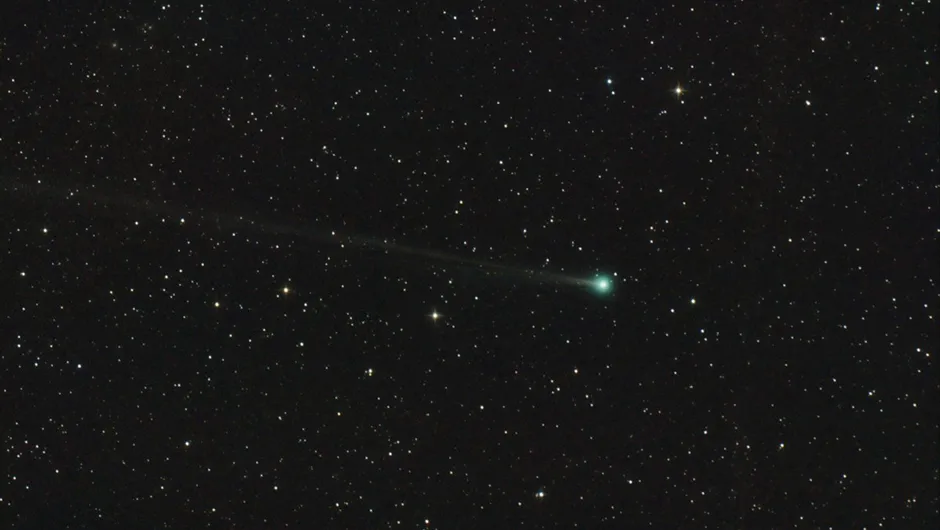In the early hours of Saturday 11 February, Comet 45P/Honda-Mrkos-Pajdusakova will make its closest approach to the Earth, coming within 12 million kilometres or 0.08 AU from our planet at about 08:00 UTC.
The comet was discovered in December 1948 by Moniru Honda and named after Honda, along with fellow astronomers Antonín Mrkos and Ľudmila Pajdušáková.
It has an elliptical orbit around the Sun that it takes 5.25 years to complete.
You may be able to spot Comet 45P using binoculars or a small telescope (but not the naked eye) before the Sun rises on 11 February, just before it makes its closest approach to Earth. It will pass north of mag. 8.8 planetary nebula NGC 6210 at 02:00 UT.
However, the glare from the full Moon and the fact it will be at mag. 7.9 will make it a challenge to observe.
Also be aware that, although a penumbral lunar eclipse is scheduled to occur between about 22:30 UT on the evening of 10 February until 02:30 UT the following morning, this will not make it any easier to observe the comet.
Nevertheless, 45P will still be in the sky after 11 February, meaning there will be further chances to observe it.

On 12 February the comet will be situated in the semi-circular constellation of Corona Borealis from 08:00 UT until 02:00 on 13 February, meaning you may be able to spot it after sunset.
Again, that lunar glare could prove problematic for those wishing to observe!
On 15 February it will be viewable low in the north-eastern sky before the Moon rises. Around 21:00 UT it will be about 5° north of the mag. +9.2 NGC 5466 and mag. +6.3 M3 globular clusters.
On 19 February, it will be south of galaxy NGC 4631 and on 21 February, north of triangular open cluster Melotte 111 in Coma Berenices.
